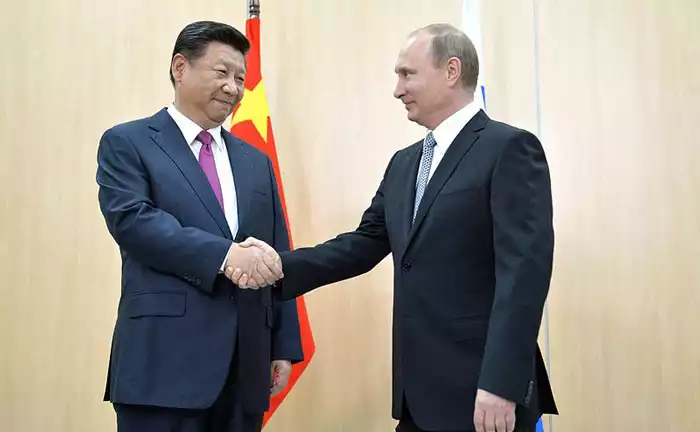Bilateral Trade & Cooperation In A “De-Dollarising” World
News
|
Posted 20/07/2017
|
8265
It’s no secret that Chinese President Xi Jinping and Russian President Vladimir Putin are two of the strongest beacons of political and economic cooperation visible in today’s geopolitical landscape. They admit it themselves. Only two weeks ago, Xi Jinping stated during his Russian visit that bilateral relations between the two nations “are now the best ever”.
The following picture of the two leaders at the BRICS summit of 2015 courtesy of kremlin.ru personifies the warm relationship between the two countries.

Some recent examples of this warm relationship include the joint statement of July 4th dealing with the Korean Peninsula issue; interestingly the first statement released under the name of both Foreign Ministries in a decade. There was additionally a subsequent joint statement on a broad range of international issues including terrorism, trade and weapons of mass destruction.
Even more interesting is the earlier Chinese Defence Ministry statement of June 29, confirming the signing of a military cooperation roadmap between the two nations extending out to 2020.
Importantly, Russia-China cooperation extends beyond the political and military spheres as we’ll discover. Significant efforts towards trade settled in Yuan have been made in what Live Trading News is calling a “first step towards an even more ambitious plan, using gold to make transactions”.
China is one of the world’s top importers of Crude Oil and Russia is neatly one of the world’s top exporters. The two market participants have been reported as taking steps to settle payments for this commodity in terms outside of the US dollar.
Journalist and economic researcher Frederick Engdahl writes that “in 2014 Russia and China signed two mammoth 30-year contracts for Russian gas to China. The contracts specified that the exchange would be done in Yuan and Russian Rubles, not in dollars. That was the beginning of an accelerating process of de-dollarization that is underway today”.
Furthermore, according to Paul Ebeling of Live Trading News, “when Russia and China agreed on their bi-lateral pipeline deal, China wished to, and did, pay for the pipeline with RMB Yuan treasury bonds, and then later for Russian Crude Oil in RMB Yuan.” Paul goes on to say that “the profits are then taken back to the Shanghai Gold Exchange to buy gold with RMB Yuan-denominated gold futures contracts.”
This idea is supported by comments made by deputy head of the Russian Central Bank Sergey Shvetsov on a visit to China in 2016, stating that the two nations have intentions to facilitate more transactions in gold and in March of this year, the Russian Central Bank opened its first overseas office in Beijing as an early step in phasing in a gold-backed standard of trade.
To the point of this article, the latest chapter in this evolving story comes from the Moscow based state owned banking and financial services company Sberbank (the largest bank in Russia & the third largest in Europe) which has now announced that it has begun trading in gold on the Shanghai Gold Exchange via its Swiss subsidiary.

According to a Reuters article published one week ago, “Sberbank was granted international membership of the Shanghai exchange in September last year and in July completed a pilot transaction with 200 kg of gold kilobars sold to local financial institutions, the bank said”. Notably, VTB (Russia’s second largest bank) is a member of the Shanghai Gold Exchange also.
Paul Ebeling provided a succinct summary of the development yesterday by saying that “Russia and China are creating a new paradigm for the world economy and paving the way for a global de-dollarization”. What is becoming increasingly clear through the formation of the SGE (something we’ve followed since inception) and beyond is that China and Russia as two of the world’s most active accumulators of gold have every intention of seeing its monetary use globally expanded.